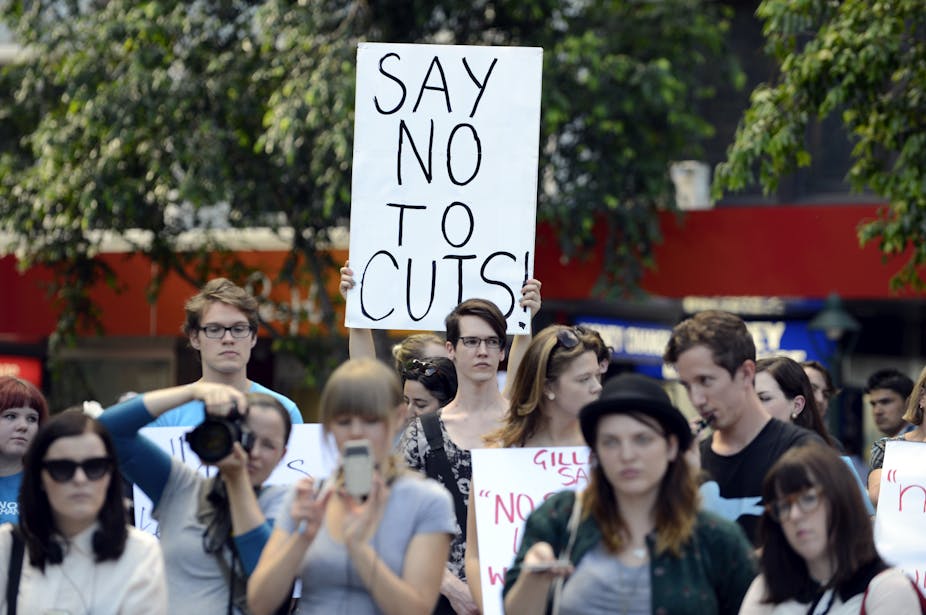The Australian government’s recent proposed cuts to university funding and student loans will cost universities A$1 billion a year by 2017 and make it harder for people to balance study and work, the chief of the peak body for Australian universities said today.
Professor Sandra Harding, Vice-Chancellor of James Cook University and chair of Universities Australia, told the National Press Club today that a new study funded by Universities Australia showed over 80% of full time university students must find a job while studying.
“A majority reported that their job adversely affects their performance at university. A third of Australian undergraduate students said that they regularly miss classes because of employment obligations; and about 17% said that they regularly went without food or other necessities because they were unable to afford them,” she said.
Her comments follow the government’s announcement it would fund the Gonski school reform plan by cutting $900 million from university funding through an efficiency dividend on universities of 2% in 2014 and a further 1.25% in 2015.
It will also convert some student scholarships to loans and remove the current 10% discount students enjoy when they pay their HECS/HELP fees up front.
“When you throw in the cuts to student support, Universities Australia estimates the combined effect on universities and students is a loss of around $1 billion per annum at 2017. These are cuts that keep on taking,” Professor Harding said.
“Added to this is the $1 billion lost to universities and students announced just over six months ago as part of the mid-year budget review process.”
Professor Harding said that “less support, greater costs will put enormous pressure on some families and young people when they come to consider whether to go on to university or not.”
The government has set a target of having 40% of all 25 to 34 year-olds hold a qualification at bachelor level or above by 2025, and recently lifted the cap on student enrolment numbers.
However, university funding had not kept pace with growing demand, Professor Harding said.
“Surely there can be no debate that Australia’s greatest resource is our people. You don’t have a mining boom if people don’t find the resource in the first place, then mine it, sell it, and use it,” she said.
“And you don’t have a smarter people if Australia’s public investment in tertiary education as a percentage of GDP is less than 24 of the world’s 29 advanced economies.”

